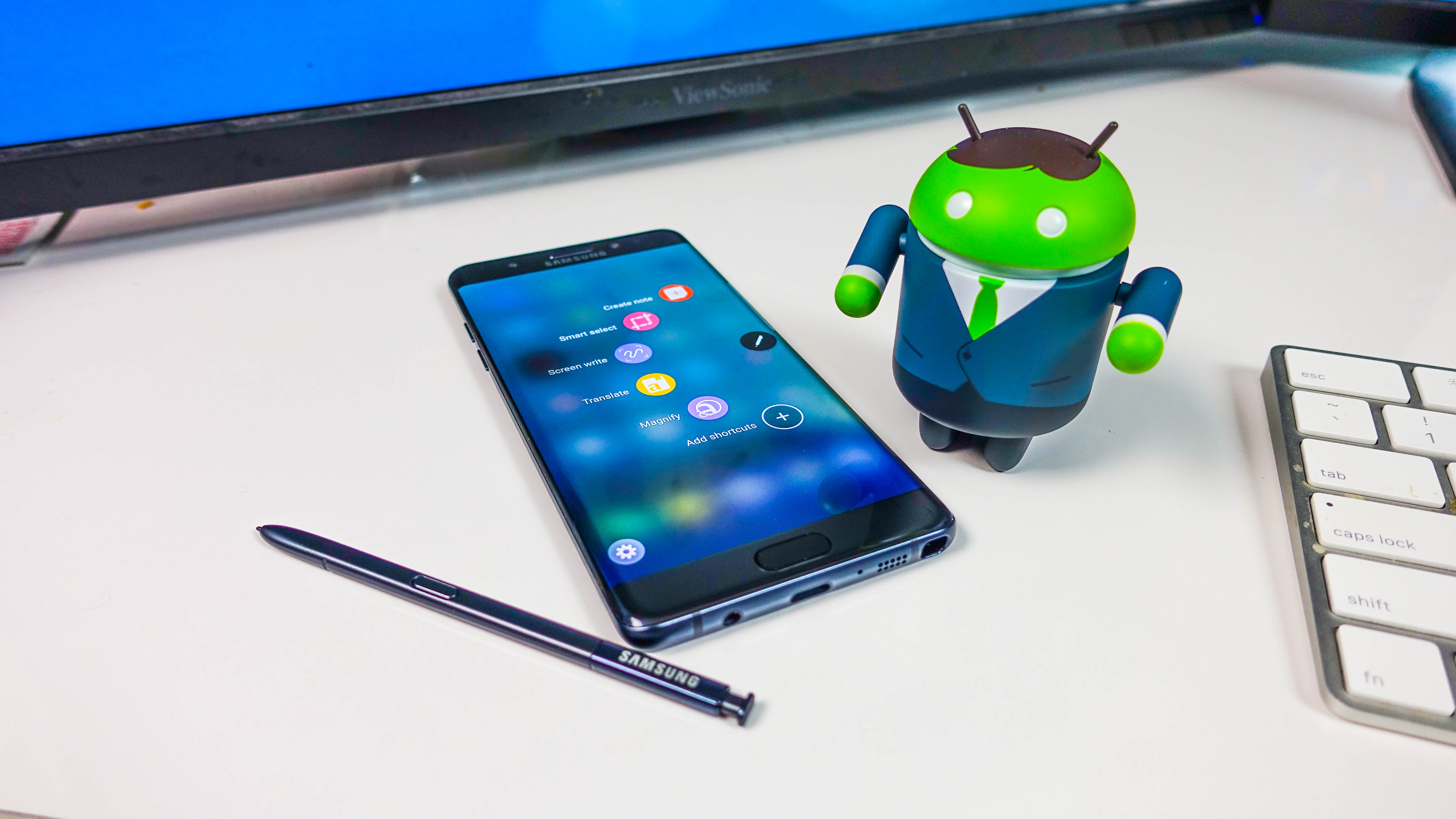Why you can trust TechRadar
The Galaxy Note 7 is a powerful performer with top-of-the line specs, and just as importantly, it's software is easier to use than ever.
Interface, reliability and compatibility
- Redesigned new TouchWiz menus are more seamless than you remember
- Misses Android 7.0 Nougat by a month, but has many of its feature already
- SMS and video calls are hobbled in the US, but Google Allo and Duo will help
Anyone who tells you Samsung's TouchWiz interface (which is the software that sits on top of the Android operating system) is slow and messy has been using the Galaxy Note 4 or earlier. Samsung has cleaned up its act in the last two years, with the Note 7 benefiting the most from our years of complaints. It's just that (most of) TouchWiz's most ardent critics have abandoned ship to LG or another phone maker, or haven't upgraded yet.
Gone is the bloatware like Smart Scroll and Smart Pause that never really worked well anyway. Yes, there are still carrier imposed apps in the US, but Samsung's software suite has reduced dramatically. Even its Video Editor app has to be downloaded separately.
What's left is an easier-to-navigate interface that makes finding apps, widgets and settings a breeze. It's the little things, really. We can now move apps by piling them into a temporary dock at the top (we call it the app train), then slide them all along to our many home screen panes (all aboard). No one else is doing that. You always have to drag a misplaced app, one at a time, several panes (more like pains), accidentally dropping it along the way.
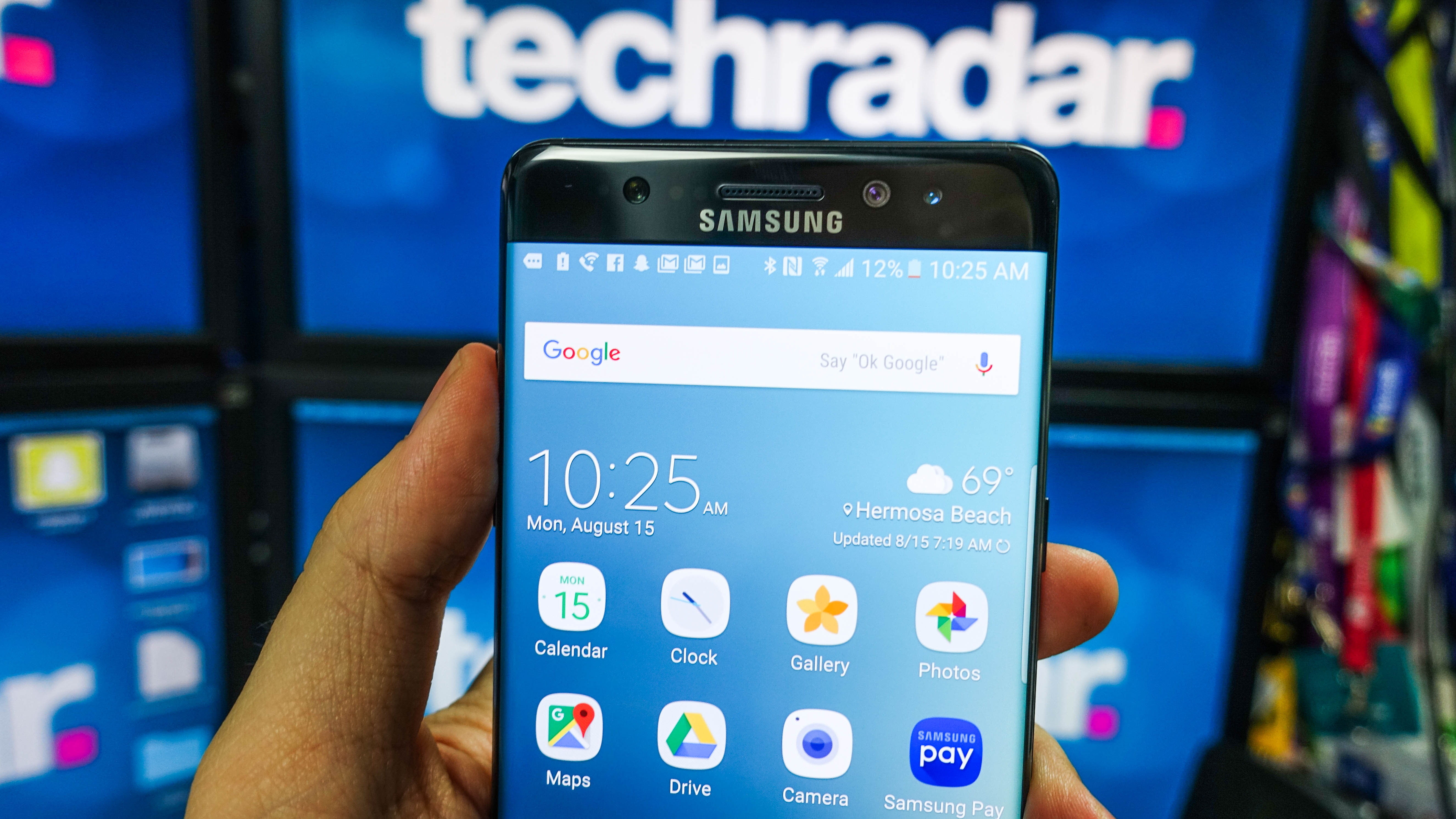
The settings menu is streamlined, and in case you go looking for something like Smart Stay in the Display submenu, at the bottom it says "Are you looking for Smart Stay?" Clicking the link will whisk you away to the proper submenu (Advanced features).
What's missing is a competent messaging app and a seamless video calling experience. That's a universal problem among Android devices and a bigger deal in the US, where SMS is still a king, and WhatsApp and WeChat are not. Give someone your digits in the US and the texts will land in Samsung's barebones SMS app or another app you installed that accepts SMS. But coaxing them to the non-SMS side of your chat client is difficult. The iPhone does it better with iMessages by overlaying an internet messages client on top of SMS. If both people have an iPhone, it's sent as an iMessage. SMS is just a backup plan.
HD video calls are also troublesome in the US. You have to be on the same carrier and own a newer Android phone to make this happen (otherwise it's greyed out). This is why iMessages and FaceTime are so powerful, and it's really unfortunate. No one uses the same messaging app on Android, and there's a power struggle that splinters everyone. Hangouts was little little too late. Our hope is that the forthcoming Google Allo and the new Duo app make this a problem of the past on Android phones and tablets.
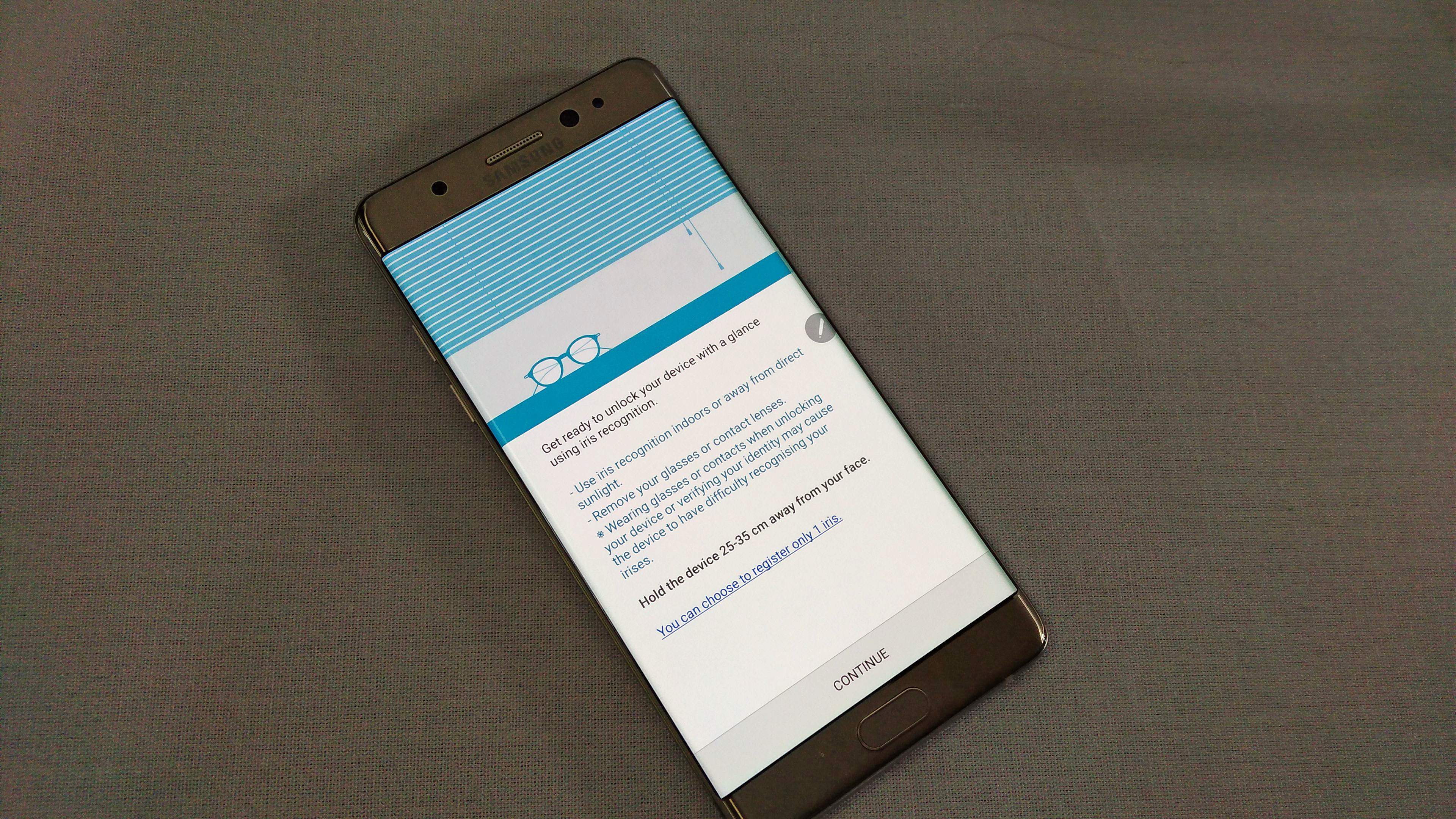
You aren't getting Android Nougat out of the box. The Note 7 is missing Google's big operating system refresh by mere weeks, with the debut said to be on the LG V20. But it really doesn't matter, as far as we can see it. Samsung phones already contain many of the new Nougat features and have for years: split screen apps, a clear all button on the recent menu and movable quick settings. The only thing it's missing out on are lockscreen quick replies and Doze Mode 2.0 battery enhancements.
Samsung actually goes beyond what Google is doing in some cases, adding a blue light filter to rival Apple's Night Shift mode on iOS 9.3, and its keyboard is more customizable and resizable (but not necessarily smarter with predictions and autocorrect than Google's keyboard). Its wallpaper even has a neat dynamically color mode depending on your viewing angle, taking parallax to a new level. The only thing sorely missing is the Mobile Hotspot from the quick settings notification shade. Don't worry, it's still buried within the regular settings menu.
Unique to Samsung's curvy phones is the Edge UI that lets you reveal a hidden side panel that mostly act as shortcuts. People Edge gives you faster access to your most frequent contacts, Tasks Edge lets you jump into your favorite apps and new third-party options include a Facebook Messenger panel (created by someone outside of Facebook) that costs $1.99. Third-party developers are finally expanding on the idea.
Movies, music and gaming
- Big, bright and colorful for watching movies and playing games
- Gamers may run into occasional issues with the curved design
- The single speaker is this phone's multimedia weak point
Enjoying any sort of multimedia on the Samsung Galaxy Note 7 is fantastic with a side of caution. Samsung's 5.7-inch Super AMOLED display provides a vibrant-looking picture that no other phone can match right now. Mobile HDR is only going to make that better when content players catch up with more movies and TV shows filmed with high-dynamic range imaging.
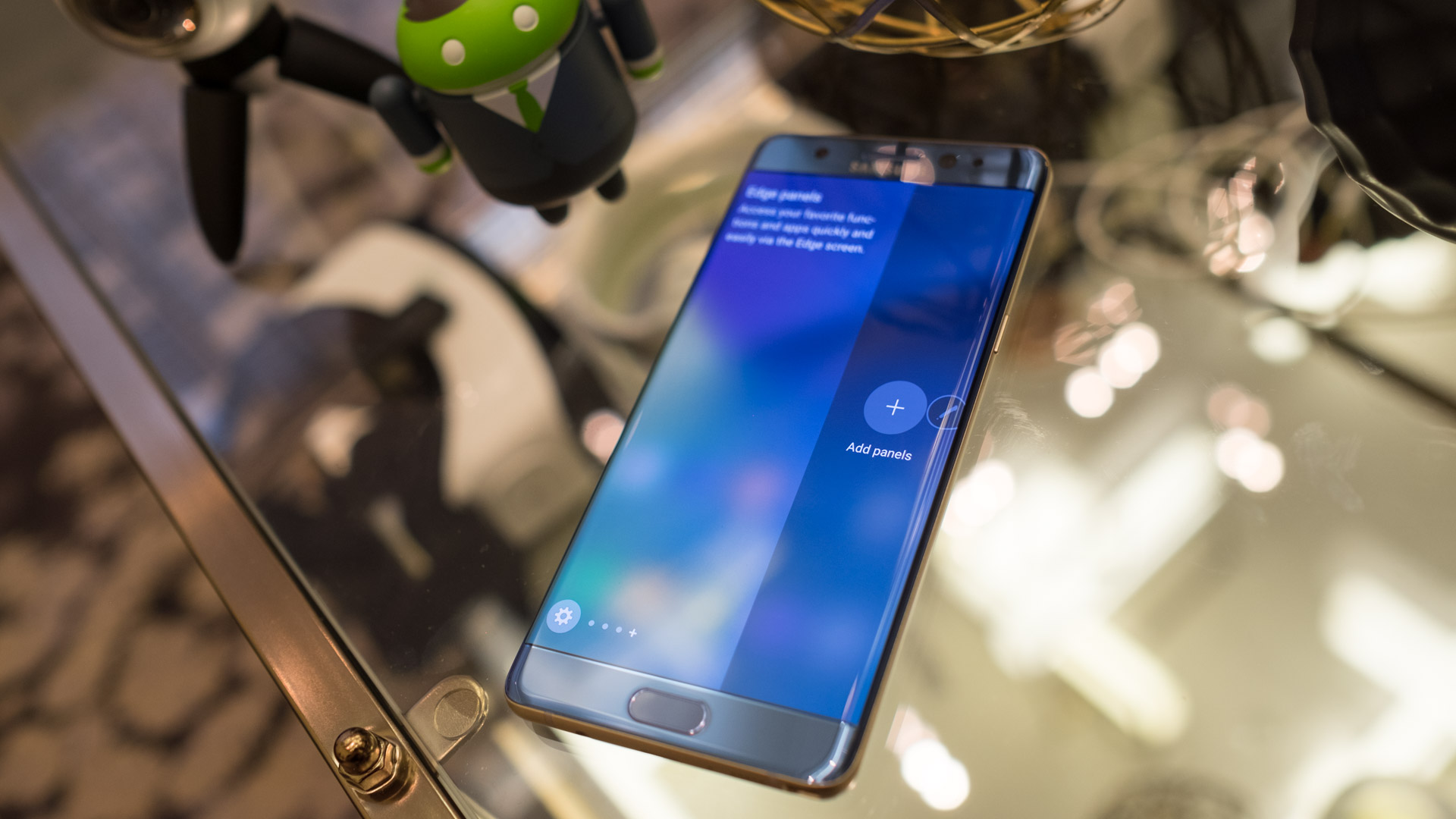
However, its curved screen can be irksome, especially for gamers who make mistakes near the edge of the display. It's not as frequent as it was on the S7 Edge, but it can still be an easy way for you to excuse yourself for dying in a game so stupidly. That said, being able to turn off the capacitive buttons while gaming is a huge win for gamers. No excuses there.
Music sounds fine (and by fine, we mean the passive aggressive fine: "Yeah, not great, but not horrible"). It pumped out Google Play Music tunes as a normal volume, but pales in comparison to the front-facing speakers we've been appreciating on other phones. The HTC 10, Moto Z and ZTE Axon 7 have gotten in right. It's time for Samsung to catch up. It's phone is so much better in every other area. We're hoping that happens with the redesigned Samsung Galaxy S8 next March.
Specs and performance
- The same fast chipset as the Galaxy S7 and S7 Edge
- 64GB of storage and microSD card slot give you ample space
- Doesn't support UFS cards for faster read and write speeds
The Samsung Galaxy Note 7 is the tale of two phones, all dependent on where you are in the world. Some regions (like the UK) have a faster phone than others (like the US).
We tested out both for our review. In the US, that means we used the Qualcomm Snapdragon 820 processor, while the UK team, benefited from Samsung's own Exynos 8890 processor. Don't worry too much. The differences on paper are greater than they are in real life.
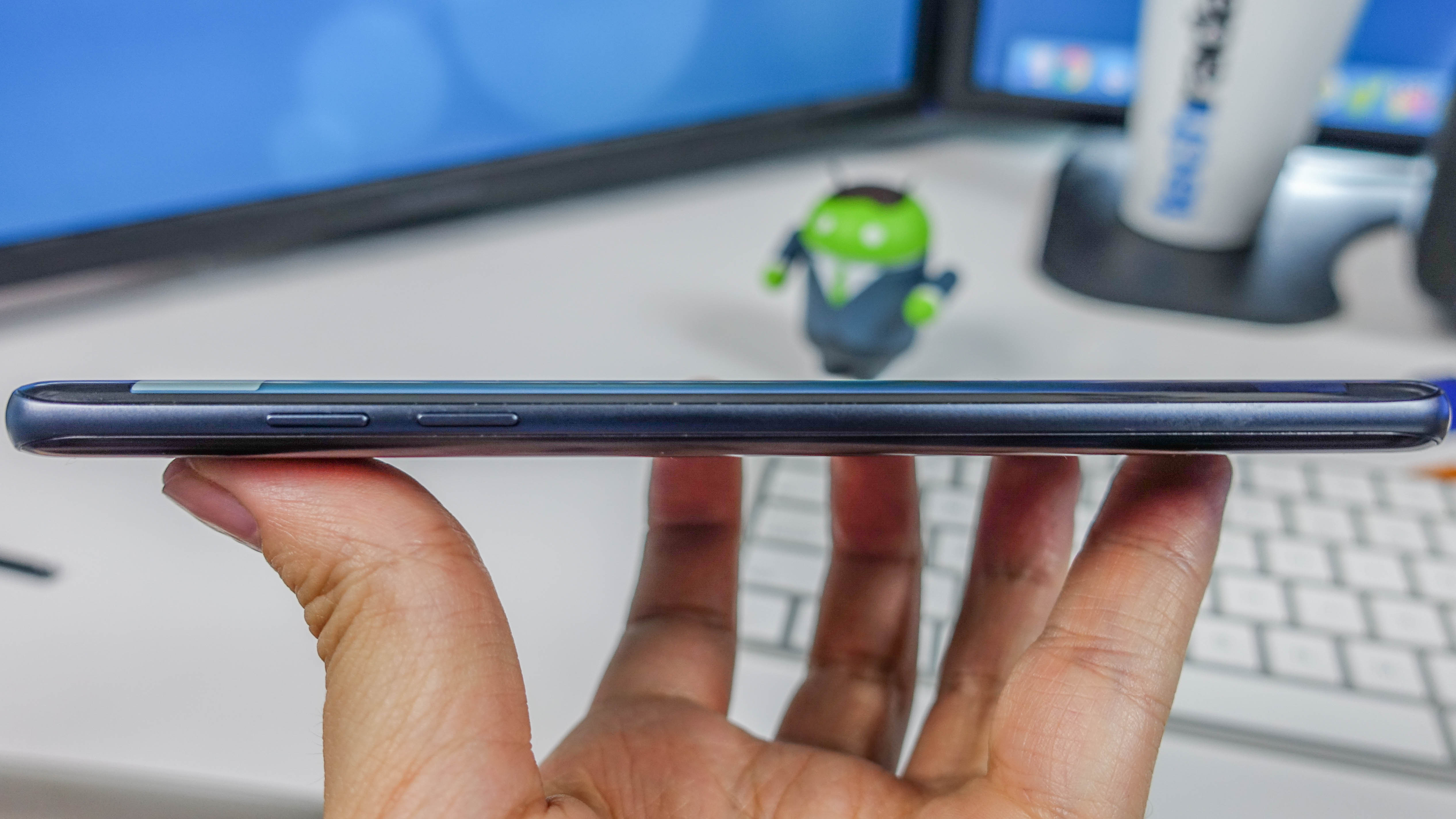
Neither configuration is slow. Each comes with 4GB of RAM, skipping out on the opportunity to give users 6GB of RAM and a little more overhead when it comes to running many apps at once. The OnePlus 3 and Asus Zenfone 3 have 6GB of RAM, but truthfully, the Note 7 is isn't necessarily slower than either of its number-focused rivals.
It did come up short in our Geekbench 3 benchmark tests, trailing the top-performing Samsung Galaxy S7 Edge at times. In the US, this meant an average multi-core score of 4,635, and in the UK using the Exynos chip, it averaged 5863, once breaking the 6,000 multi-score ceiling.
Reflecting these scores in real life, we did experience rare slowdown when pushing the phone to the limit: re-downloaded all of our apps, using GPS and playing music at the same time. You're probably not going to be juggling that much in everyday use.
The Note 7 isn't any faster than the S7 and S7 Edge, but here's how it is built for power: it includes more internal space than other entry-level Samsung phone. It has 64GB of internal storage instead of providing a cheaper 32GB model. That's both good and bad when you think about it. In the long run, Samsung is betting you'll be thankful in the long run.
If you do need more storage than that, the Note 7 supports microSD cards again, with a slot for the tiny memory card format tucked inside of the nanoSIM card tray. It's good for holding photos, movies and music as a spill over space or for easy transferring. However, newly launched UFS microSD cards are not supported, which is a shame. Samsung's memory card division touts the faster read and write speeds of UFS for things like 4K video recording, but it's not on its top-billed phone.
The US also drew the short straw when it comes to getting an unlocked phone. It took the S7 and S7 Edge about four months before Samsung started selling the phone at full price without all of the carrier restrictions. Moving between networks on the Note 7 isn't possible without paying a hefty early termination fee or a much higher full price.
Current page: What's it like to use?
Prev Page Introduction, design, S Pen and iris scanner Next Page Battery life and camera